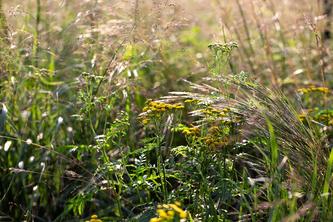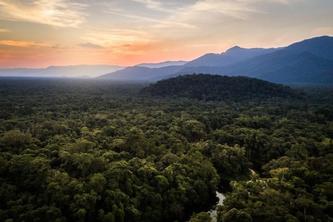Black ash wetlands cover approximately 1.2 million acres of wetland forest in the western Great Lakes. They are an ecologically significant part of Minnesota’s landscapes and provide critical habitat for wildlife.
However, new research from the Natural Resources Research Institute (NRRI) at the University of Minnesota Duluth finds the invasive emerald ash borer (EAB) threatens to irreversibly alter the structure and functioning of black ash-dominated wetlands throughout northeastern North America. Funding for this project was provided by the Minnesota Environment and Natural Resources Trust Fund as recommended by the Legislative-Citizen Commission on Minnesota Resources (LCCMR).
The study was recently published in the journal Ecological Applications and represents a comprehensive assessment of the potential impacts of EAB and associated adaptation strategies on wildlife species dependent on black ash wetland forests.
“EAB is a serious and immediate threat to black ash wetlands, and the impacts in this region will be extensive with potential for large areas of forested wetlands converting to marsh-like conditions,” said study lead author Alexis Grinde, a wildlife ecologist and research manager of the Avian Ecology Lab at NRRI. “Prior to the EAB threat, relatively little was known about black ash wetland ecosystems, hindering our ability to quantify the extent and magnitude of impacts and possible means to mitigate them. We needed information about wildlife to help inform management strategies.”
To quantify the potential impacts of tree mortality from EAB on wildlife communities, the research team measured seasonal bird, mammal and amphibian diversity in black ash wetlands. They used a dual approach: 1) documenting bird and amphibian species across 27 mature reference black ash wetlands in northern Minnesota and 2) assessing how bird, mammal and amphibian communities respond to experimental manipulations of black ash forests that emulate mortality and management strategies related to the potential impact of EAB.
A total of 85 wildlife species were recorded for the entire study, including 57 bird species, 5 amphibian species and 23 mammal species.
The study found that:
- There may be short-term increases in species richness for mammal and bird communities associated with changes in forest structure due to ash mortality; however, anticipated changes resulting from EAB-caused mortality—particularly the conversion of these sites to non-forested wetlands—will lead to significant shifts in bird and mammal community composition.
- Loss of ash may cause declines in forest-dependent species and increases in open-canopy and wetland-associated species.
- While increased ponding extent and longer hydroperiods—the length of time and portion of year the wetland holds ponded water—may be beneficial for some amphibian species; the loss of the forest canopy will result in an overall decrease in bird diversity and reduce forest connectivity for all species.
“Findings from this research are being used to develop management strategies to mitigate the impact of EAB and maintain black ash wetlands as forested ecosystems,” said Grinde. “Our findings have been used to develop policies and secure resources to conduct mitigation strategies which include the manipulation of forest structure and planting to increase compositional diversity and introduce tree species that can replace the ecological role that black ash currently plays. If successful, our findings will have directly influenced the maintenance of wetland forests across northern Minnesota and the many ecosystem services that they provide.”
Other research team members include Melissa B. Youngquist from the Daniel P. Haerther Center for Conservation and Research, John G. Shedd Aquarium, Chicago, IL; Robert A. Slesak from the USDA Forest Service, Pacific Northwest Research Station, Olympia, WA; Steve R. Kolbe and Josh D. Bednar from NRRI; Brian J. Palik from the USDA Forest Service, Northern Research Station, Grand Rapids, MN; and Anthony W. D’Amato from the University of Vermont, Rubenstein School of Environment and Natural Resources, Burlington, VT.
- Categories:
- Agriculture and Environment
- Animals
- Forestry





